Java基础问题
Java was first released by Sun Microsystems in 1995. The development of Java began in the early 1990s, led by James Gosling and his team. The language was originally called "Oak" but was later renamed "Java" after a type of coffee.
Java was created to address the need for a platform-independent programming language that could be used to create software that could run on any device, regardless of the underlying hardware or operating system. The primary goal was to allow developers to "write once, run anywhere," meaning that code written in Java could run on any platform that supported the Java Virtual Machine (JVM).
Java's design focused on simplicity, portability, and security, making it suitable for a wide range of applications, from web development to enterprise software. It quickly gained popularity due to its versatility and the ability to build robust, high-performance applications across different platforms.
Being one of the most widely used languages in software development today, and having studied it for a long time, I've gathered here some questions and answers about the wonderful world of Java.
Hated by many, but loved by others.
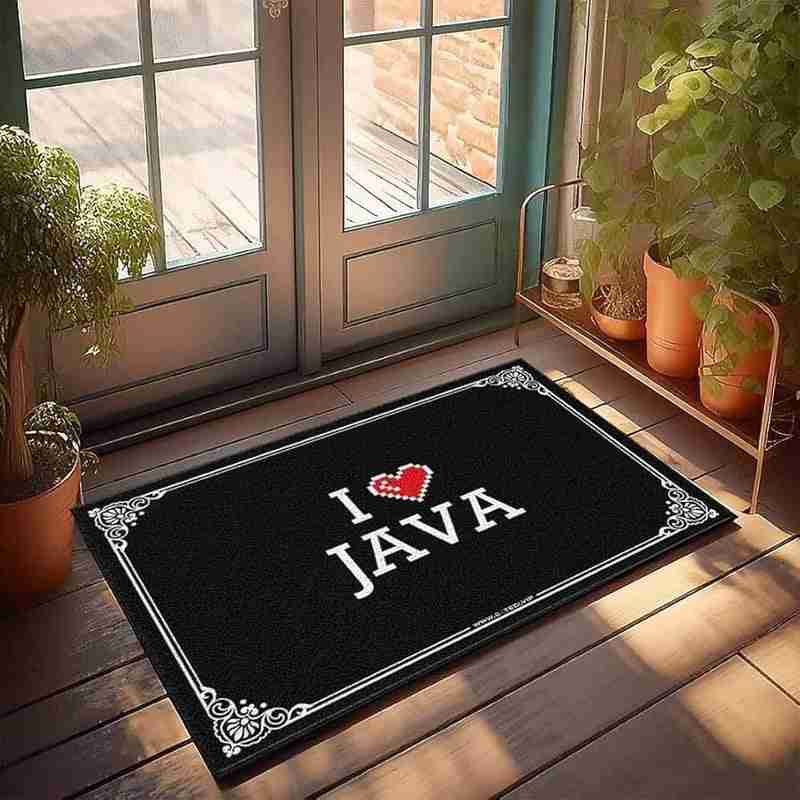
Questions
1. What is the difference between JDK and JRE?
The JDK( Java Development kit ) is used by developers for creating Java applications and includes the necessary tools, libraries, and compilers. The JRE (Java Runtime Environment) is used by end-users to run Java applications and provides the runtime environment and essential class libraries, but does not include development tools.
2. What are the benefits of using Java?
These are benefits of using Java:
Portability: Java code can be run on any platform that has a Java Virtual Machine (JVM).
Security: Java has a built-in security model that helps to protect users from malicious code.
Object-oriented: Java is an object-oriented programming language, which makes it easy to create modular and reusable code.
Robust: Java is a robust language that is designed to be reliable and efficient.
Widely used: Java is a Widely used language that has a large community of developers and support resources.
3. What are the different components of the Java Platform?
The Java Platform is a software environment that provides a standard way for developing and running Java applications. It consists of the following components:
Java Virtual Machine (JVM).
Java Runtime Environment (JRE).
Java Development kit (JDK).
4. What are the different types of Java data types?
There are two types of data types in Java: primitive data types and non-primitive data types.
Primitive data types
- boolean
- byte
- short
- int
- long
- float
- decimal places
- double
- char
Non-primitive data types
- String
- Array
- Class
- Interface
- Enum
5. What are the different types of Java control statements?
There are three types of control statements in Java:
- Decision-making statements (if, if else & switch).
- Looping statements (while, do while & for).
- Jump statements (continue & return).
6. What are the different types of Java classes & Java interfaces?
There are two main types of Java classes:
Normal classes are the most common type of class in Java. They can have fields, methods, and constructors.
Abstract classes are classes that cannot be instantiated. They can only be used as a base class for other classes.
There are also two main types of Java interfaces:
Normal interfaces are a collection of abstract methods. A class can implement an interface, thereby inheriting the abstract methods of the interface.
Maker interfaces are interfaces that do not contain any methods. They are used to indicate that a class has a certain property or behavior.
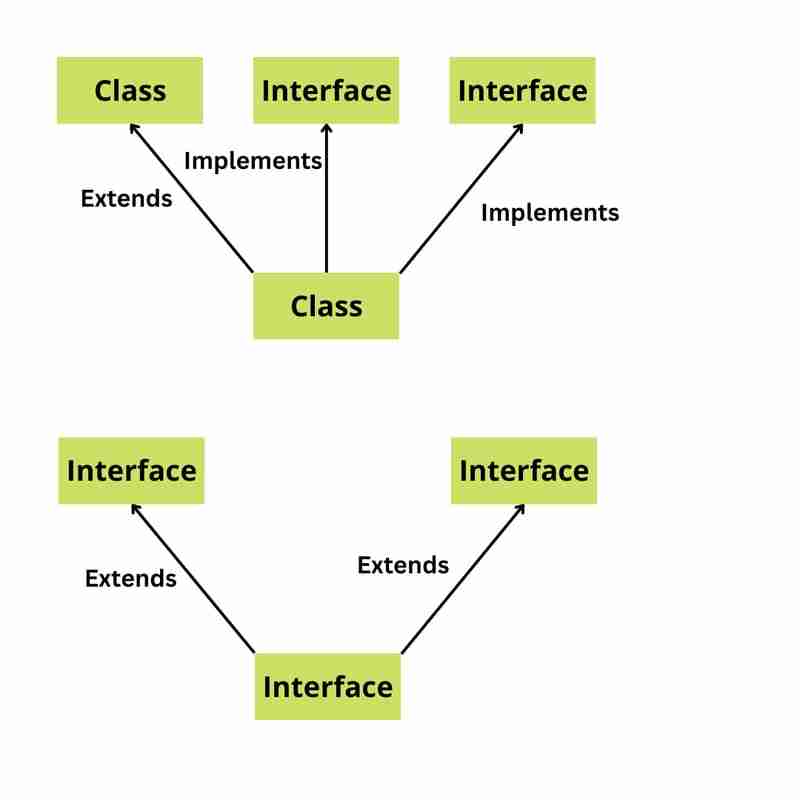
7. What are the different types of Java libraries & Java frameworks?
A Java library is a collection of reusable Java classes and interfaces.
** Some examples of Java libraries:**
Apache Commons Google Guava Joda-Time JUnit Mockito
A java framework is a collection of reusable Java classes, interfaces, and code that provides specific functionality.
Some examples of Java libraries:
- Spring
- Hibernate
- JSF
- Grails
- Struts
8. What are the different types of Java tools?
There are two types of threads in Java: user threads and daemon threads.
User threads are the threads that are created by the user or application. They are high-priority threads and the JVM will wait for any user thread to finish its task before terminating it.
Daemon threads are the threads that are created to provide services to user threads. They are low-priority threads and are only needed while user threads are running. Once all user threads have finished their execution, the JVM will terminate even if there are daemon threads still running.
9. What are the different types of Java networking?
There are two main types of Java networking:
Client-server networking is a type of networking where there is a client application that requests a service from a server application. The server application then provides the service to the client application.
Peer-to-peer networking is a type of networking where two or more applications communicate directly with each other without the need for a server.
10. What is the difference between Procedural programming and OOP?
Procedural programming is a top-down approach to programming, where the program is divided into a series of functions that each perform a specific task.
OOP, on the other hand, is a bottom-up approach to programming, where the program is divided into objects that each represent a real-world entity.
11. What are the core concepts of OOP?
The core concepts of OOP are:
-
Abstraction: Abstraction is the process of hiding the implementation details of an object from the user. This allows the user. This allows the user to focus on the object's functionality wthout having to worry about how it works.
- Encapsulation: Encapsulation is the bundling of data and codes into a single unit. This makes it easier to maintain and update the code, and it also makes it more difficult for users to accidentally modify the data.
- Inheritance: Inheritance is the ability of an object to inherit the properties and methods of another object. This allows developers to reuse code and create more complex objects with fewer lines of code.
- Polymorphism: Polymorphismis the ability of an object to bahave differently depending on its context. This allows developers to write code that is more flexible and easier to maintain.
12. What is the difference between Overloading and Overriding?
Overloading refers to the ability to have multiple methods with the same name, but different parameters.
Overriding refers to the ability to have a method in a subclass that has the same signature as a method in a superclass.
13. What is the difference between static and dynamic binding?
Static binding and dynamic binding are two different ways of resolving function calls in object-oriented programming (OOP).
-Static binding: occurs when the compiler determines the method to be called at compile time. This is the most common type of binding in OOP, and it is used for both static and non-virtual methods.
-Dynamic binding: occurs when the method to be called is not determined until runtime. This is used for virtual methods, which allow for polymorphism.

14. Why Java doesn't support Multiple Inheritance?
Java doesn't support multiple inheritance because it can lead to a number of problems, including:
- Ambiguity.
- Circular dependencies.
- Complexity.
15. When do you use interface and abstract class in Java?
Abstract classes and interfaces are both used to achieve abstraction in object-oriented programming.
Abstract classes are similar to normal classes, with the difference that they can include abstract methods, which are methods without a body. Abstract classes cannot be instantiated.
Interfaces are a kind of code contract, which must be implemented by a concrete class. Interfaces cannot have state, whereas the abstract class can have state whith instance variables.
16. What are the challenges of using OOP in Java?
There are some challenges associated with using OOP in Java.
These challenges include:
-
Complexity: OOP can make code more complex, especially when dealing with large and complex systems.
- Overhead: OOP can add some overhead to code, as objects need to be created and managed.
- Testing: OOP can make code more difficult to test, as objects need to be tested in isolation and in combination.
- Performance: OOP can impact performance, as objects can add some overhead.
17. What is the difference between an array and a linked list?
In general, arrays are good choice for data structures where the data is accessed frequently and the order of the data is important.
Linked lists are a good choice for data structures where the data is inserted or deleted frequently and the order of the data is not important.
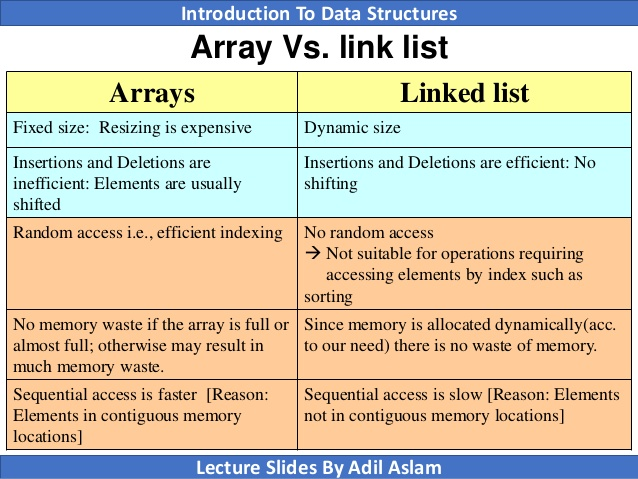
18. Explain the concept of a hash table.
A hash table is a data structure that maps keys to values. It is a very efficient data structure for storing and retrieving data, as it can access data in constant time.
put(key, value): This method stores the key-value pair in the hash table.
get(key): This method returns the value associated with the key.
remove(key): This method removes the key-value pair from the hash table.
19. What is the time complexity of various operations in a binary search tree (BST)?
The time complexity of various operations in a binary search tree (BST) depends on the height of the tree. The height of a BST is the number of nodes on the longest path from the root node to a leaf node.
The following table shows the time complexity of various operations in a BST:
Operation---------------Time complexity
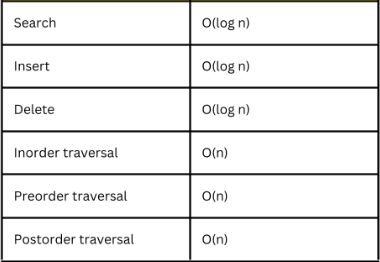
20. Describe the difference between breadth-first search (BFS) and depth-first search (DFS) algorithms.
Here is a table that summarizes the key differences between BFS and DFS:
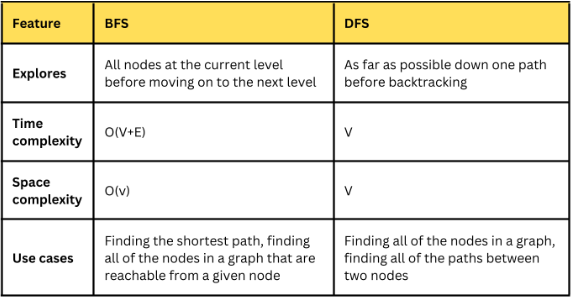
21. Explain the concept of a priority queue and provide an example of its application.
A priority queue is a data structure that stores elements along with their associated priorities. It allows efficient retrieval of the element with the highest (or lowest) priority. The priority determines the order in which elements are processed or accessed.
22. Explain the concept of dynamic programming and provide an example problem where it can be applied.
Dynamic programming is a problem-solving technique that involves breaking down complex problems into smaller, overlapping subproblems and solving them in a bottom-up manner.
23. How does a HashSet work internally in Java?
A HashSet internally uses a HashMap to store its elements. When you add an element to a HashSet, it is first hashed using the hashCode() method.
The hash code is then used to find the corresponding bucket in the HashMap. If the bucket is not empty, the element is compared to the other elements in the bucket using the equals() method. If the element is equal to any of the other elements in the bucket, it is not added to the HashSet.
24. What is the time complexity of various operations in a hash table?
The time complexity of various operations in a hash table depends on the hash function used and the number of elements in the hash table. In general, the time complexity of the following operations is:
- Isertion: O(1) on average, O(n) in the worst case.
- Search: O(1) on average, O(n) in the worst case.
- Deletion: O(1) on average, O(n) in the worst case.
25. What is multithreading, and why is it important in Java?
Multithreading is a programming concept that allows multiple tasks to be executed concurrently. In Java, multithreading is implemented using the thread class. A thread object represents a single thread of execution.
There are many reasons why multithreading is important in Java.
Some of the most important reasons include:
- Increased performance.
- Improved responsiveness.
- Reduced resource usage.
26. How can you create a thread in Java?
There are two ways to create a thread in Java:
- By extending the thread class
- By implementing the Runnable interface
27. What is the difference between a process and a thread?
A process is a program in execution. It has its own memory space, its own stack, and its own set of resources.
A thread is a lightweight process that shares the same memory space and resources as other threads in the same process.
Some of the key differences between processes and threads:
- Processes are independent of each other.
- Processes are heavier than threads.
- Processes are more difficult to create and manage than threads.
28. How does synchronization work in Java? Explain the concepts of synchronized methods and blocks.
Synchronization in Java is a mechanism that allows multiple threads to access shared resources safely. When a thread is synchronized on a resource, it is the only thread that can access that resource.
This prevents race conditions, which are situations where two or more threads are trying to access the same resource at the same time.
There are two ways to synchronize in Java:
- Using synchronized methods.
- Using synchronized blocks.
Synchronized methods:
A synchronized method is a method that can only be executed by one thread at a time. To declare a method as synchronized, you need to use the synchronized keyword.
Synchronized blocks
A synchronized block is a block of code that can only be executed by one thread at a time. To declare a block of code as synchronized, you need to use the synchronized keyword and specify the object that the block is synchronized on.
29. What is a deadlock, and how can it be avoided?
A deadlock is a situation where two or more threads are waiting for each other to finish. This can happen when two threads are each trying to acquire a lock on the same resource.
To avoid deadlocks, we can do this:
- Avoid using locks unnecessarily.
- Use locks in a consistent order.
- Use deadlock detection and prevention tools.
30. What is the purpose of the volatile keyword in Java?
The volatile keyword is used to ensure that all threads see the same value of a variable, even if the value is changed by another thread.
31. Explain the difference between preemptive scheduling and time-slicing in the context of thread scheduling.
Preemptive scheduling is when the operating system can forcibly remove a thread from the CPU and give it to another thread. Time-slicing is when each thread is given a certain amount of time to run on the CPU.
The main difference is that in preemptive scheduling, the operating system can interrupt a thread at any time, while in time-slicing, the thread is only interrupted when it has used up its allotted time.
32. What is an exception in Java, and why is exception handling important?
In Java, an exception is an event that occurs during the execution of a program that disrupts the normal flow of instructions. It is an object which is thrown at runtime.
Here are some of the benefits of exception handling:
- Prevents program crashes.
- Allows you to recover from errors.
- Provides information about the error.
- Makes your code more robust.
- Makes your code easier to read and understand.
33. How does Java handle exceptions.
Java handles exceptions by using a mechanism called exception propagation. When an exception is thrown, it is propagated up the call stack until it is caught. If the exception is not caught, the program will crash.
34. Describe the try-catch-finally block and its purpose in exception handling.
The try-catch-finally block is a Java syntax that allows you to handle exceptions gracefully. It consists of three parts:
- The try block.
- The catch block.
- The finally block.
Here are some of the benefits of using try-catch-finally blocks:
- Prevents program crashes.
- Allows you to recover from errors.
- Provides information about the error.
- Makes your code more robust.
- Makes your code easier to read and understand.
35. What is the difference between the throw and throws keywords in Java?
The throw and throws keywords in Java are used to handle exceptions.
- The throw keyword is used to explicitly throw an exception
- The throws keyword is used to declare that a method can throw an exception.
36. How can you create custom exceptions in Java?
To create a custom exception in Java, you need to create a class that extends the Exception class. The custom exception class can have its own constructors, methods, and fields.
References: https://medium.com/@spinjosovsky/practical-comparison-between-depth-first-search-dfs-vs-breadth-first-serch-bfs-bf360240cf72
https://docs.oracle.com/en/java/
https://www.algotutor.io/campus-program
-
 为什么不````''{margin:0; }`始终删除CSS中的最高边距?在CSS 问题:不正确的代码: 全球范围将所有余量重置为零,如提供的代码所建议的,可能会导致意外的副作用。解决特定的保证金问题是更建议的。 例如,在提供的示例中,将以下代码添加到CSS中,将解决余量问题: body H1 { 保证金顶:-40px; } 此方法更精确,避免了由全局保证金重置引...编程 发布于2025-04-06
为什么不````''{margin:0; }`始终删除CSS中的最高边距?在CSS 问题:不正确的代码: 全球范围将所有余量重置为零,如提供的代码所建议的,可能会导致意外的副作用。解决特定的保证金问题是更建议的。 例如,在提供的示例中,将以下代码添加到CSS中,将解决余量问题: body H1 { 保证金顶:-40px; } 此方法更精确,避免了由全局保证金重置引...编程 发布于2025-04-06 -
 为什么使用Firefox后退按钮时JavaScript执行停止?导航历史记录问题:JavaScript使用Firefox Back Back 此行为是由浏览器缓存JavaScript资源引起的。要解决此问题并确保在后续页面访问中执行脚本,Firefox用户应设置一个空功能。 警报'); }; alert('inline Alert'...编程 发布于2025-04-06
为什么使用Firefox后退按钮时JavaScript执行停止?导航历史记录问题:JavaScript使用Firefox Back Back 此行为是由浏览器缓存JavaScript资源引起的。要解决此问题并确保在后续页面访问中执行脚本,Firefox用户应设置一个空功能。 警报'); }; alert('inline Alert'...编程 发布于2025-04-06 -
 如何使用PHP从XML文件中有效地检索属性值?从php PHP陷入困境。使用simplexmlelement :: attributes()函数提供了简单的解决方案。此函数可访问对XML元素作为关联数组的属性: - > attributes()为$ attributeName => $ attributeValue){ echo ...编程 发布于2025-04-06
如何使用PHP从XML文件中有效地检索属性值?从php PHP陷入困境。使用simplexmlelement :: attributes()函数提供了简单的解决方案。此函数可访问对XML元素作为关联数组的属性: - > attributes()为$ attributeName => $ attributeValue){ echo ...编程 发布于2025-04-06 -
 PHP阵列键值异常:了解07和08的好奇情况PHP数组键值问题,使用07&08 在给定数月的数组中,键值07和08呈现令人困惑的行为时,就会出现一个不寻常的问题。运行print_r($月)返回意外结果:键“ 07”丢失,而键“ 08”分配给了9月的值。此问题源于PHP对领先零的解释。当一个数字带有0(例如07或08)的前缀时,PHP将其...编程 发布于2025-04-06
PHP阵列键值异常:了解07和08的好奇情况PHP数组键值问题,使用07&08 在给定数月的数组中,键值07和08呈现令人困惑的行为时,就会出现一个不寻常的问题。运行print_r($月)返回意外结果:键“ 07”丢失,而键“ 08”分配给了9月的值。此问题源于PHP对领先零的解释。当一个数字带有0(例如07或08)的前缀时,PHP将其...编程 发布于2025-04-06 -
 如何在其容器中为DIV创建平滑的左右CSS动画?通用CSS动画,用于左右运动 ,我们将探索创建一个通用的CSS动画,以向左和右移动DIV,从而到达其容器的边缘。该动画可以应用于具有绝对定位的任何div,无论其未知长度如何。问题:使用左直接导致瞬时消失 更加流畅的解决方案:混合转换和左 [并实现平稳的,线性的运动,我们介绍了线性的转换。这...编程 发布于2025-04-06
如何在其容器中为DIV创建平滑的左右CSS动画?通用CSS动画,用于左右运动 ,我们将探索创建一个通用的CSS动画,以向左和右移动DIV,从而到达其容器的边缘。该动画可以应用于具有绝对定位的任何div,无论其未知长度如何。问题:使用左直接导致瞬时消失 更加流畅的解决方案:混合转换和左 [并实现平稳的,线性的运动,我们介绍了线性的转换。这...编程 发布于2025-04-06 -
 对象拟合:IE和Edge中的封面失败,如何修复?To resolve this issue, we employ a clever CSS solution that solves the problem:position: absolute;top: 50%;left: 50%;transform: translate(-50%, -50%)...编程 发布于2025-04-06
对象拟合:IE和Edge中的封面失败,如何修复?To resolve this issue, we employ a clever CSS solution that solves the problem:position: absolute;top: 50%;left: 50%;transform: translate(-50%, -50%)...编程 发布于2025-04-06 -
 如何使用PHP将斑点(图像)正确插入MySQL?essue VALUES('$this->image_id','file_get_contents($tmp_image)')";This code builds a string in PHP, but the function call ...编程 发布于2025-04-06
如何使用PHP将斑点(图像)正确插入MySQL?essue VALUES('$this->image_id','file_get_contents($tmp_image)')";This code builds a string in PHP, but the function call ...编程 发布于2025-04-06 -
 为什么我在Silverlight Linq查询中获得“无法找到查询模式的实现”错误?查询模式实现缺失:解决“无法找到”错误在Silverlight应用程序中,尝试使用LINQ建立LINQ连接以错误而实现的数据库”,无法找到查询模式的实现。”当省略LINQ名称空间或查询类型缺少IEnumerable 实现时,通常会发生此错误。 解决问题来验证该类型的质量是至关重要的。在此特定实例中...编程 发布于2025-04-06
为什么我在Silverlight Linq查询中获得“无法找到查询模式的实现”错误?查询模式实现缺失:解决“无法找到”错误在Silverlight应用程序中,尝试使用LINQ建立LINQ连接以错误而实现的数据库”,无法找到查询模式的实现。”当省略LINQ名称空间或查询类型缺少IEnumerable 实现时,通常会发生此错误。 解决问题来验证该类型的质量是至关重要的。在此特定实例中...编程 发布于2025-04-06 -
 在细胞编辑后,如何维护自定义的JTable细胞渲染?在JTable中维护jtable单元格渲染后,在JTable中,在JTable中实现自定义单元格渲染和编辑功能可以增强用户体验。但是,至关重要的是要确保即使在编辑操作后也保留所需的格式。在设置用于格式化“价格”列的“价格”列,用户遇到的数字格式丢失的“价格”列的“价格”之后,问题在设置自定义单元格...编程 发布于2025-04-06
在细胞编辑后,如何维护自定义的JTable细胞渲染?在JTable中维护jtable单元格渲染后,在JTable中,在JTable中实现自定义单元格渲染和编辑功能可以增强用户体验。但是,至关重要的是要确保即使在编辑操作后也保留所需的格式。在设置用于格式化“价格”列的“价格”列,用户遇到的数字格式丢失的“价格”列的“价格”之后,问题在设置自定义单元格...编程 发布于2025-04-06 -
 如何正确使用与PDO参数的查询一样?在pdo 中使用类似QUERIES在PDO中的Queries时,您可能会遇到类似疑问中描述的问题:此查询也可能不会返回结果,即使$ var1和$ var2包含有效的搜索词。错误在于不正确包含%符号。通过将变量包含在$ params数组中的%符号中,您确保将%字符正确替换到查询中。没有此修改,PDO...编程 发布于2025-04-06
如何正确使用与PDO参数的查询一样?在pdo 中使用类似QUERIES在PDO中的Queries时,您可能会遇到类似疑问中描述的问题:此查询也可能不会返回结果,即使$ var1和$ var2包含有效的搜索词。错误在于不正确包含%符号。通过将变量包含在$ params数组中的%符号中,您确保将%字符正确替换到查询中。没有此修改,PDO...编程 发布于2025-04-06 -
 如何干净地删除匿名JavaScript事件处理程序?删除匿名事件侦听器将匿名事件侦听器添加到元素中会提供灵活性和简单性,但是当要删除它们时,可以构成挑战,而无需替换元素本身就可以替换一个问题。 element? element.addeventlistener(event,function(){/在这里工作/},false); 要解决此问题,请考虑...编程 发布于2025-04-06
如何干净地删除匿名JavaScript事件处理程序?删除匿名事件侦听器将匿名事件侦听器添加到元素中会提供灵活性和简单性,但是当要删除它们时,可以构成挑战,而无需替换元素本身就可以替换一个问题。 element? element.addeventlistener(event,function(){/在这里工作/},false); 要解决此问题,请考虑...编程 发布于2025-04-06 -
 如何从Python中的字符串中删除表情符号:固定常见错误的初学者指南?从python import codecs import codecs import codecs 导入 text = codecs.decode('这狗\ u0001f602'.encode('utf-8'),'utf-8') 印刷(文字)#带有...编程 发布于2025-04-06
如何从Python中的字符串中删除表情符号:固定常见错误的初学者指南?从python import codecs import codecs import codecs 导入 text = codecs.decode('这狗\ u0001f602'.encode('utf-8'),'utf-8') 印刷(文字)#带有...编程 发布于2025-04-06 -
 您如何在Laravel Blade模板中定义变量?在Laravel Blade模板中使用Elegance 在blade模板中如何分配变量对于存储以后使用的数据至关重要。在使用“ {{}}”分配变量的同时,它可能并不总是最优雅的解决方案。幸运的是,Blade通过@php Directive提供了更优雅的方法: $ old_section =“...编程 发布于2025-04-06
您如何在Laravel Blade模板中定义变量?在Laravel Blade模板中使用Elegance 在blade模板中如何分配变量对于存储以后使用的数据至关重要。在使用“ {{}}”分配变量的同时,它可能并不总是最优雅的解决方案。幸运的是,Blade通过@php Directive提供了更优雅的方法: $ old_section =“...编程 发布于2025-04-06 -
 如何实时捕获和流媒体以进行聊天机器人命令执行?在开发能够执行命令的chatbots的领域中,实时从命令执行实时捕获Stdout,一个常见的需求是能够检索和显示标准输出(stdout)在cath cath cant cant cant cant cant cant cant cant interfaces in Chate cant inter...编程 发布于2025-04-06
如何实时捕获和流媒体以进行聊天机器人命令执行?在开发能够执行命令的chatbots的领域中,实时从命令执行实时捕获Stdout,一个常见的需求是能够检索和显示标准输出(stdout)在cath cath cant cant cant cant cant cant cant cant interfaces in Chate cant inter...编程 发布于2025-04-06 -
 如何克服PHP的功能重新定义限制?克服PHP的函数重新定义限制在PHP中,多次定义一个相同名称的函数是一个no-no。尝试这样做,如提供的代码段所示,将导致可怕的“不能重新列出”错误。 但是,PHP工具腰带中有一个隐藏的宝石:runkit扩展。它使您能够灵活地重新定义函数。 runkit_function_renction_re...编程 发布于2025-04-06
如何克服PHP的功能重新定义限制?克服PHP的函数重新定义限制在PHP中,多次定义一个相同名称的函数是一个no-no。尝试这样做,如提供的代码段所示,将导致可怕的“不能重新列出”错误。 但是,PHP工具腰带中有一个隐藏的宝石:runkit扩展。它使您能够灵活地重新定义函数。 runkit_function_renction_re...编程 发布于2025-04-06
学习中文
- 1 走路用中文怎么说?走路中文发音,走路中文学习
- 2 坐飞机用中文怎么说?坐飞机中文发音,坐飞机中文学习
- 3 坐火车用中文怎么说?坐火车中文发音,坐火车中文学习
- 4 坐车用中文怎么说?坐车中文发音,坐车中文学习
- 5 开车用中文怎么说?开车中文发音,开车中文学习
- 6 游泳用中文怎么说?游泳中文发音,游泳中文学习
- 7 骑自行车用中文怎么说?骑自行车中文发音,骑自行车中文学习
- 8 你好用中文怎么说?你好中文发音,你好中文学习
- 9 谢谢用中文怎么说?谢谢中文发音,谢谢中文学习
- 10 How to say goodbye in Chinese? 再见Chinese pronunciation, 再见Chinese learning

























